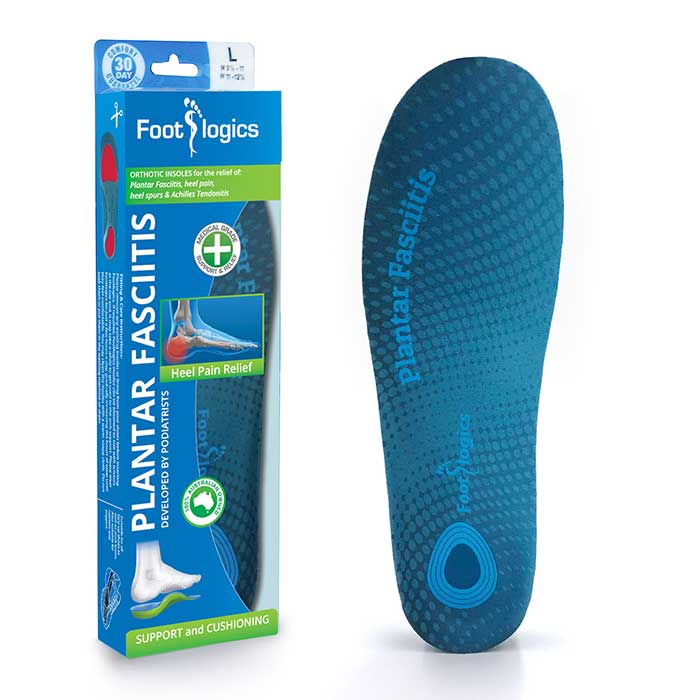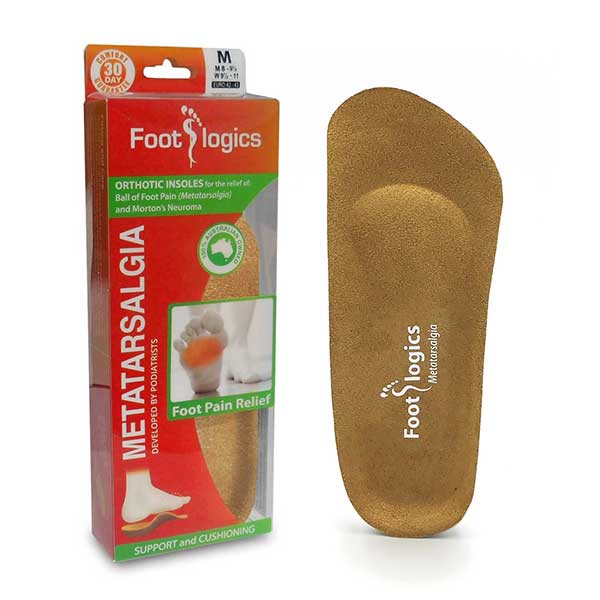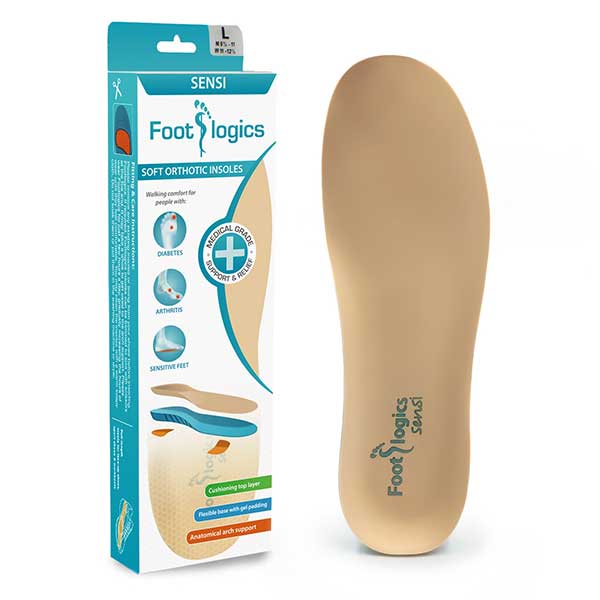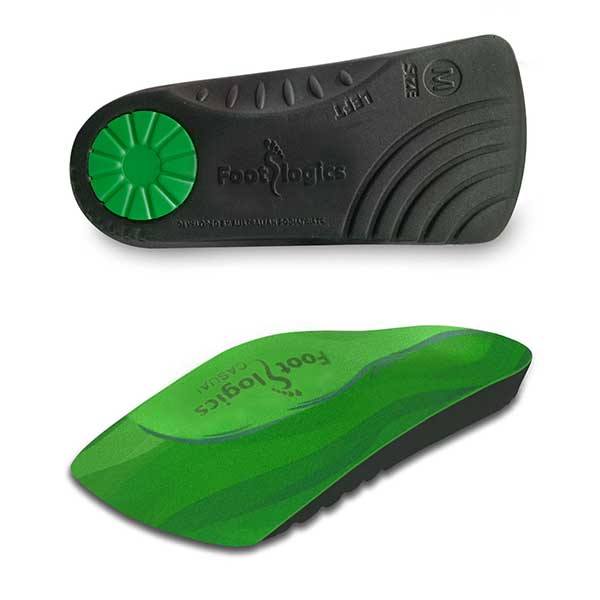Free Shipping On All Orders Over $75
Free Shipping on all orders over $75 Australia Wide
Free Shipping On All Orders Over $75
Free Shipping on all orders over $75 Australia Wide

Array
(
[0] => 5986
[1] => 5982
[2] => 5983
[3] => 6259
[4] => 5987
[5] => 5981
)


Array
(
[0] => 6023
[1] => 6017
[2] => 6018
[3] => 6019
[4] => 5981
)


Array
(
[0] => 6052
[1] => 6048
[2] => 6049
[3] => 6053
[4] => 5981
)

There are many types of foot orthotics and arch supports on the market these days. Custom-made orthotics vary in the different materials used (from hard plastic, hard foam or graphite) and pre-made orthotics vary in shape and materials used, depending on the person’s requirement in terms of use and the type of footwear they use.
Footlogics Australia has a wide range of pre-made orthotics for different uses, foot conditions and types of footwear. If you are treat a foot complaint please click here. Footlogics arch supports are made of a firm E.V.A. foam or a PU Cushioning they provide excellent walking comfort and a short ‘break-in’ time.
The Footlogics Sports is ideal for running and walking shoes. It not only provides arch support and re-alignment, but also a great deal of cushioning as it is made of soft P.U. with gel pads in the heel and forefoot. The hard plastic outer shell provides effective biomechanical support and re-alignment. The arch support is medium-strength and a result, this insole feels comfortable from the start, requiring no ‘break-in time’ whatsoever.
The Footlogics Sensi is a softer type of orthotic, especially designed for people with Diabetes, Arthritis and sensitive feet. It is very popular with elderly people who find it hard to get used to normal firm or semi-firm orthotics. This insole is extremely cushioning, yet provides the wearer with mild arch support and metatarsal support. The top layer is made of Plastazote, a patented memory-foam that has been used by podiatrists for over 30 years.
The Footlogics Catwalk is a flexible orthotic insole that fits into all types of narrow women’s footwear, with a high heel, low heel or no heel. Flat shoes like ballerinas are quite popular but offer no support whatsoever. With these Catwalk insoles the arches and metatarsal bones are properly supported, plus the product is made of cushioning P.U. material for extra walking comfort!
Footlogics now also has a range of thongs with built-in orthotics.
Foot orthotics (also known as ortheses) are corrective insoles, designed to support and re-align the foot. Some people may refer to these devises as “arch supports”. Up until the mid 1990’s foot orthotics were only available to patients as a prescription from a health professional (usually a podiatrist). They were made to measure and customised to the patient’s foot. Foot orthotics were used mostly for patients with severe lower limb problems resulting in an abnormal gait pattern.
Today orthotic insoles are used by a wide variety of people for various reasons. In addition, more and more ‘off-the-shelf’ orthotics are being dispensed. These products are not custom-made but have a standard configuration and are made of much softer materials, compared to (often rigid) custom-made orthotics.
As a result the cost of the ‘pre-made’ orthotics are only a fraction of the cost of customised podiatry orthotics. Lower cost doesn’t necessarily mean the product’s performance is lessened.
The insole’s effectiveness depends on what type and what degree of support and re-alignment the wearer requires.
The fact is that most of us do not require a rigid orthotic with a very high arch. Foot correction and ankle re-alignment in most cases can be achieved with a standard semi-firm insole, as long as the shape of the arch is sufficient to make a difference, and as long as the material is not too soft.
A very soft insole will simply be squashed down, providing little or no support. Therefore, for a pre-made orthotic to be effective it needs to be made of materials that are firm enough to provide support.
On the other hand, the material should have some ‘give’ and allow the foot to pronate and supinate (to put it simply: move down and roll in and move up and roll out) as nature intended us to walk.
A rigid custom-made orthotic restricts this natural movement, and therefore these insoles should only be used for people with special requirements. These orthotics are often referred to as ‘functional orthotics’.
The main problem that affects the majority of people in Australia, is a condition called excessive pronation. Basically it means that the arch of the foot tends to flatten out during standing and walking, and the ankles tend to roll in.
Most people will notice that their shoes wear out faster on the outside (in particular under the heel of the shoe). This is completely normal, but it makes people think they actually walk on the outside of their feet. Walking on the outside of the foot is almost impossible and very rare! What happens is that our feet always land on the outside heel first when our shoes make contact with the ground.

After hitting the ground on the outside heel, the foot then start to make full contact with the ground (i.e. the shoe is now flat on the ground) and the next phase is where the foot rolls inward for a moment before ‘taking off’ and leaving the ground. This is all part of our natural walking pattern.
The problem is that most people tend to roll their feet in too much and for too long. This is called excessive pronation (or over-pronation) and it happens to an estimated 70% of the population, including to those of us who have shoes that wear out on the outside heel…
Orthotics and arch supports are useful in the treatment of a wide variety of conditions: from children’s flat feet to diabetic foot condition, from running injuries, such as Achilles Tendonitis or Shin Splints to ball of foot pain in women wearing high heels (or who have worn high heels in the past).
The most common foot condition for which orthotics are used today is Plantar Fasciitis (heel pain/heel spurs). This foot problem affects thousands of Australians in all age groups, it is more prevalent in the over 50’s.
Orthotics are not only used to treat painful foot conditions. Many physiotherapists and chiropractors now use orthotics to re-align the entire body, helping to relieve and prevent common conditions such as knee pain and lower back pain. Even hip pain. Some people may require a lift under one foot, if one leg is shorter than the other. Leg length difference is quite common, even more so after knee or hip replacement or any type of surgery concerning the lower limb.
Also, after serious accidents (like a car accident or a fall) one leg may become shorter than the other.
A simple solution is to glue a heel lift under the foot or under the orthotic. This will make the leg ‘longer’ by an extra 4, 6 or 8mm. In some cases 20mm is required, which means special footwear will have to be made for the patient.

Array
(
[0] => 6072
[1] => 6070
[2] => 6069
[3] => 6068
[4] => 5981
)


Array
(
[0] => 6038
[1] => 6034
[2] => 6035
[3] => 6036
[4] => 5981
)


Array
(
[0] => 6016
[1] => 6010
[2] => 6011
[3] => 6012
[4] => 6263
[5] => 6262
[6] => 5981
)

Follow Along On Instagram